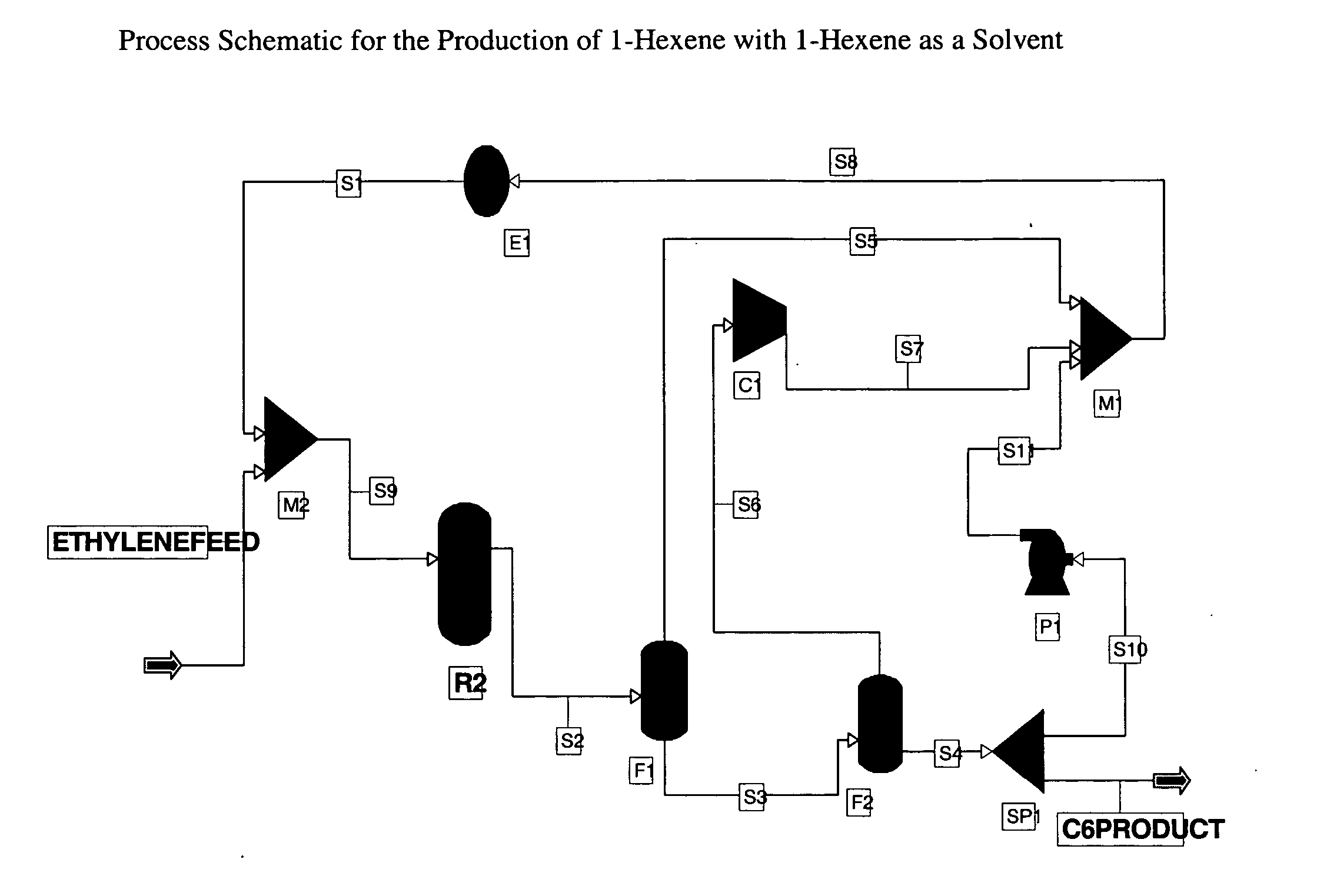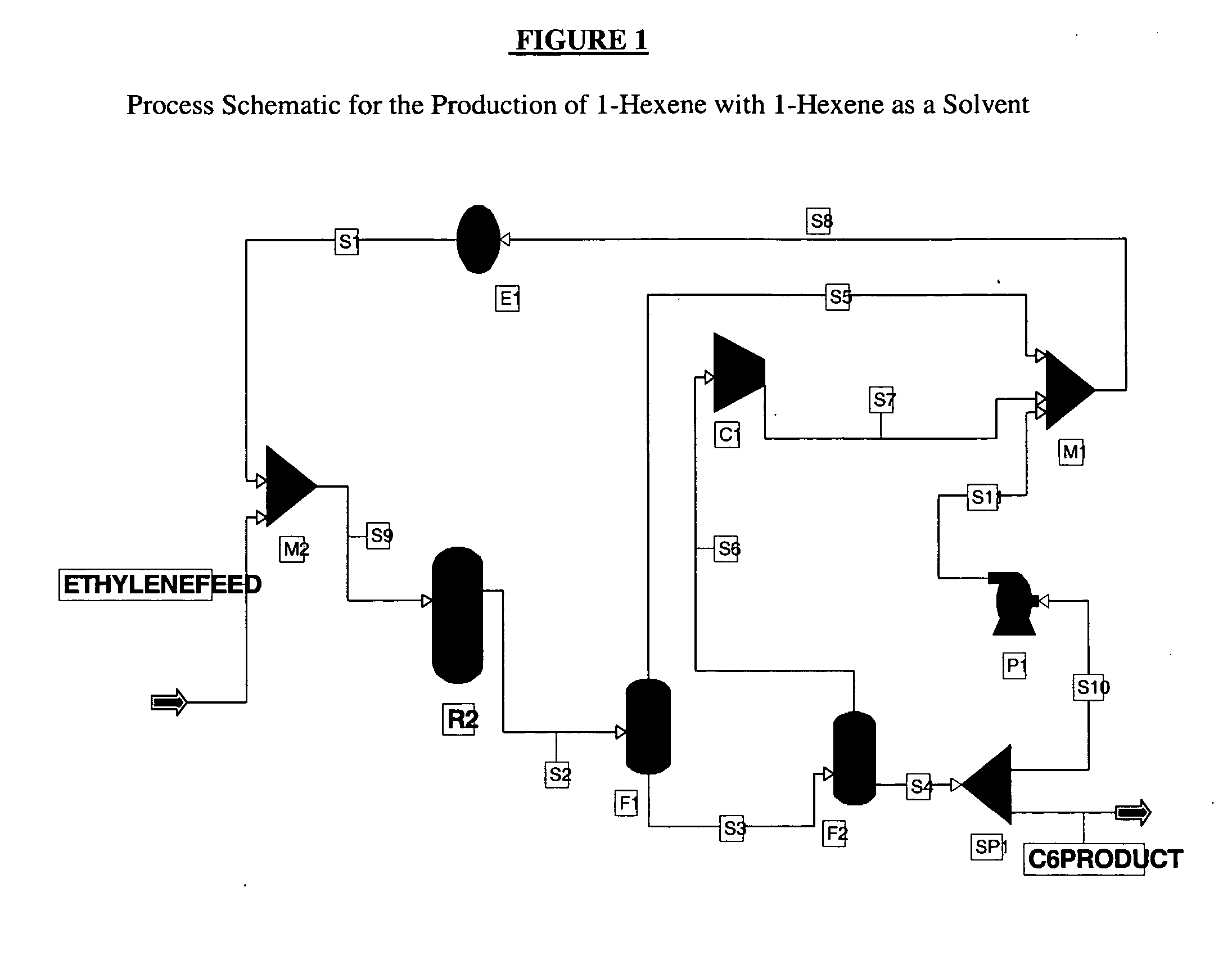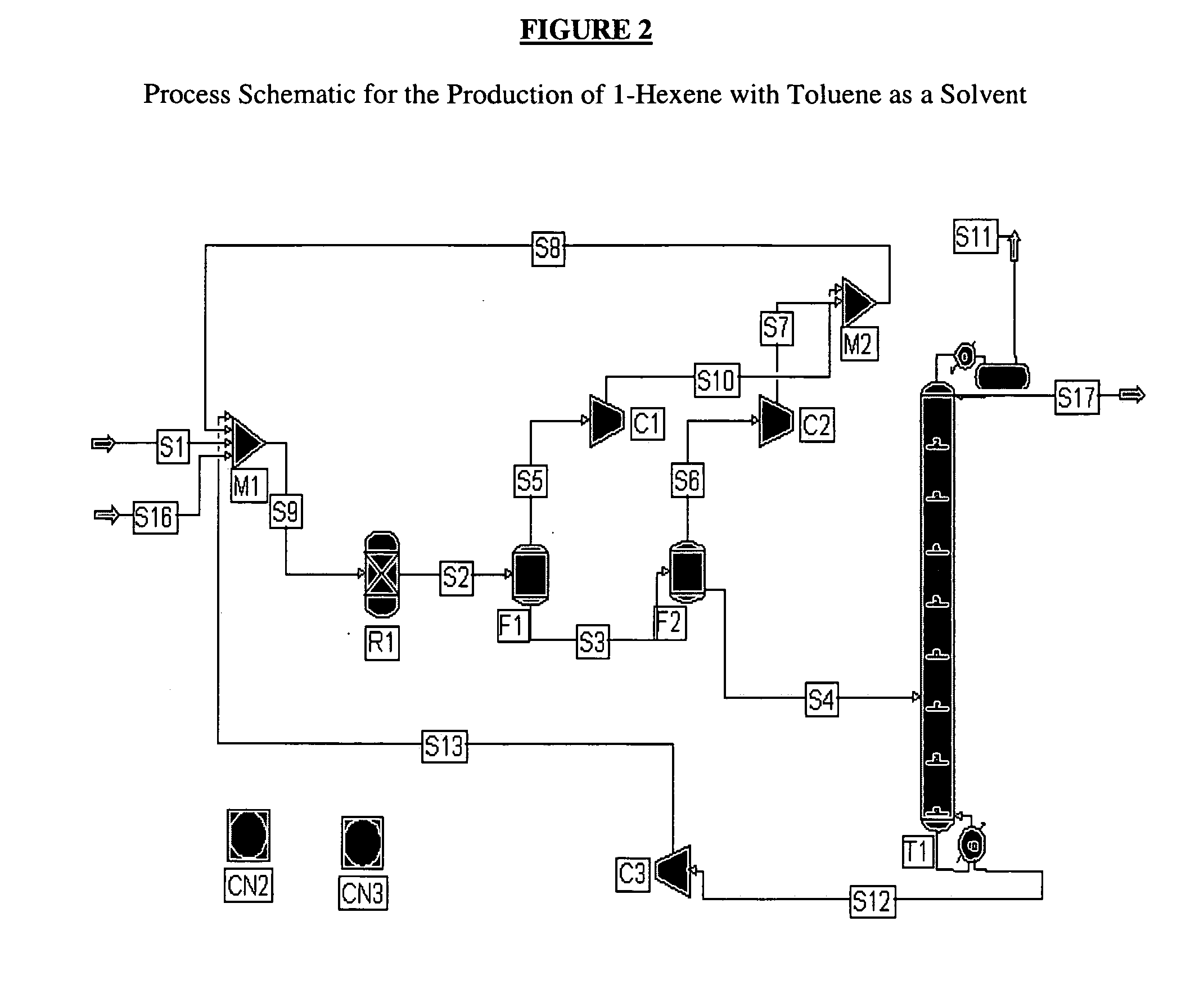Process for generating linear alpha olefin comonomers
- Summary
- Abstract
- Description
- Claims
- Application Information
AI Technical Summary
Benefits of technology
Problems solved by technology
Method used
Image
Examples
simulation example 1
1-Hexene Product as a Catalyst Solvent
[0050] An exemplary process schematic using the 1-hexene product as the solvent is shown in FIG. 1. The ethylene feed is 100% ethylene while the reaction selectivity to 1-hexene is 100%. The feed is mixed with a recycled ethylene and 1-hexene stream S1 and is fed to reactor R2. The reactor R2 is operated at 90° C. and 400 psia and is sized to achieve 60% per pass conversion of ethylene. The product stream from the reactor S2 is separated from the unconverted ethylene using two flash drums F1, F2 operated at 400 and 14.96 psia respectively. The gas outlet S6 of the second flash drum F2 is then recompressed at 400 psia using a compressor C1 and recycled back to the reactor R2. The liquid stream S4 from the second flash drum F2, which includes >99.5% 1-hexene, is split into two streams, S10 and C6PRODUCT, using a flow splitter SP1. The S10 hexene stream is recycled acting as the catalyst solvent in comonomer synthesis process. Homogeneous or slurr...
simulation example 2
1-Hexene Product with Toluene as a Catalyst Solvent
[0051] Another exemplary process using toluene as the catalyst solvent is shown in FIG. 2. The ethylene feed S1 is again 100% ethylene while the reaction selectivity to 1-hexene is 100%. The ethylene feed S1 is mixed through M1 with recycle stream S8 containing ethylene, solvent, and 1-hexene and is fed to reactor R1. The reactor R1 is operated at 100° C. and 400 psia and is sized to achieve 50% per pass conversion of ethylene. The product and the solvent are separated from the unconverted ethylene using two flash drums F1, F2 in series operated at 300 and 14.96 psia respectively. The gas outlets of the flash drums S5, S6 are recompressed to 400 psia, combined in one stream S8 and recycled back to the reactor R1. The liquid stream S4 from flash unit F2 is fed to a distillation column operation T1 at atmospheric pressure in order to separate 1-hexene S17 from the toluene solvent S12. The toluene solvent S12 collected at the bottom o...
simulation example 3
Hexene Product with Isopentane as a Solvent—High Pressure
[0052] Another exemplary process using isopentane as the catalyst solvent at high pressure is shown in FIG. 3. Increasing the process pressure allows for an operation with the recycle stream as a liquid, which permits the use of a pump instead of an expensive compressor to transport the recycle stream. In this exemplary process, ethylene feed (C2FEED) is oligomerized to 1-hexene at 90° C. and 800 psia using isopentane, IC5FEED, as a catalyst solvent. The C2FEED is 100% ethylene while the reaction selectivity to 1-hexene is 100%. The feed is mixed with recycled ethylene, isopentane and 1-hexene (Recycle) and fed to the reactor R2. The reactor R2 is operated at 90° C. and 800 psia and is sized to achieve 80% per pass conversion of ethylene. The reactor product stream S5 is then fed to a flash drum F1 where the 1-hexene stream S6 is separated from the unconverted ethylene and catalyst solvent stream S15 at 150 psia. The bottoms ...
PUM
| Property | Measurement | Unit |
|---|---|---|
| Temperature | aaaaa | aaaaa |
| Fraction | aaaaa | aaaaa |
| Fraction | aaaaa | aaaaa |
Abstract
Description
Claims
Application Information
 Login to View More
Login to View More - R&D
- Intellectual Property
- Life Sciences
- Materials
- Tech Scout
- Unparalleled Data Quality
- Higher Quality Content
- 60% Fewer Hallucinations
Browse by: Latest US Patents, China's latest patents, Technical Efficacy Thesaurus, Application Domain, Technology Topic, Popular Technical Reports.
© 2025 PatSnap. All rights reserved.Legal|Privacy policy|Modern Slavery Act Transparency Statement|Sitemap|About US| Contact US: help@patsnap.com



